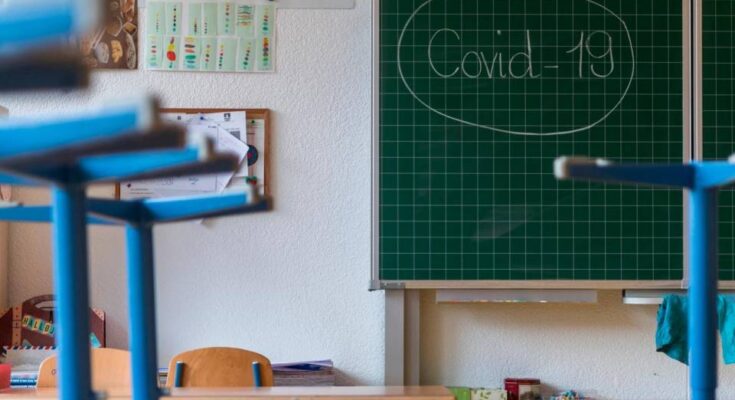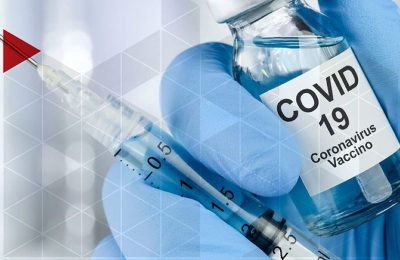Scuola – Quando l’incidenza delle infezioni da Sars-CoV-2 è ancora alta, allentare le restrizioni può portare a un rapido nuovo picco dei casi, e quindi dei ricoveri, anche se l’indice Rt, che misura la contagiosità del virus, è inferiore a 1.
Tutto questo proviene da uno studio dei ricercatori di Fondazione Bruno Kessler (FBK), Istituto Superiore di Sanità (Iss) e Inail, pubblicato sulla rivista scientifica Proceedings of the National Academy of Sciences of the United States (Pnas).
Nello studio, basato sui dati della “prima ondata” dell’epidemia da Covid-19, è stato usato un modello di trasmissione del virus per stimare l’impatto di diverse strategie di mitigazione, introducendo anche la stima del rischio nei diversi settori produttivi in maniera innovativa. I risultati di questa ricerca sono stati utilizzati per definire i possibili scenari a seguito delle riaperture della fase 2 e scenari e interventi nella fase autunnale.
Gli autori hanno stimato che la popolazione italiana che si è infettata fino allo scorso 30 settembre era pari a circa il 4,8% del totale, con grandi differenze tra regione e regione (circa l’11% in Lombardia, il 2% in Lazio e l’1% in Campania).
Riaprire le scuole di ogni ordine e grado e riattivare completamente i contatti sociali senza misure restrittive potrebbe determinare “un’onda epidemica non contenibile”.
“L’analisi condotta – si legge – non permette di distinguere tra infezione trasmessa all’interno degli edifici scolastici e infezione trasmessa durante le attività peri-scolastiche (es. trasporti, assembramenti fuori dalle scuole, attività extra-scolastiche)”.
Retrospective analysis of the Italian exit strategy from
COVID-19 lockdown
Center for Health Emergencies, Bruno Kessler Foundation, Trento 38123, Italy; b
Department of Occupational and Environmental Medicine, Epidemiology
and Hygiene, Italian Workers’ Compensation Authority, Monteporzio Catone (Rome) 00078, Italy;
Department of Infectious Diseases, Istituto Superiore di
Sanità, Rome 00161, Italy; dDepartment of Epidemiology and Biostatistics, Indiana University School of Public Health, Bloomington, IN 47405;
and e Laboratory for the Modeling of Biological and Socio-technical Systems, Northeastern University, Boston, MA 02115
Edited by Andrea Rinaldo, École Polytechnique Fédérale de Lausanne, Lausanne, Switzerland, and approved December 14, 2020 (received for review September 18, 2020)
After the national lockdown imposed on March 11, 2020, the Italian government has gradually resumed the suspended economic and social activities since May 4, while maintaining the
closure of schools until September 14. We use a model of severe acute respiratory syndrome coronavirus 2 (SARS-CoV-2) transmission to estimate the health impact of different exit strategies. The strategy adopted in Italy kept the reproduction number Rt at values close to one until the end of September, with marginal regional differences. Based on the estimated postlockdown transmissibility, reopening of workplaces in selected industrial activities might have had a minor impact on the transmissibility. Reopening educational levels in May up to secondary schools might have influenced SARS-CoV-2 transmissibility only marginally; however, including high
schools might have resulted in a marked increase of the disease burden. Earlier reopening would have resulted in disproportionately higher hospitalization incidence. Given community contacts in September, we project a large second wave associated with school reopening in the fall.
SARS-CoV-2 | reopening scenarios | mathematical modeling Since the declaration of the COVID-19 pandemic (1), a large number of countries worldwide have applied unprecedented restrictive measures to prevent the disease from overwhelming national health systems. The measures aimed at reducing the number of social contacts by enforcing physical distancing, and included different degrees of school closures, suspension of nonessential productive activities, stopping of mass gatherings and events, reduction of internal and international flights, and individual movement restrictions (2). Italy, the first country to experience a widespread epidemic in the western hemisphere, was also the first country outside of Asia to impose a generalized lockdown on March 11, 2020, allowing its citizens to leave their homes only in selected circumstances, that is, medical needs, grocery or pharmacy shopping, and commuting to work for essential jobs, with all of the others suspended or converted to smart working (3). These interventions have proven successful in
curbing the spread of the disease (4–6). At the same time, they have imposed massive economic challenges and severely limited individual freedoms with possible large-scale consequences for
mental health and well-being (7). After the lifting of lockdowns, European countries, including Italy, have been successful in limiting the incidence of infections throughout the summer, but a
second epidemic wave has swept them since the beginning of the fall (8).
We retrospectively analyze the dynamics of COVID-19 since the emergence of the epidemic in Italy until September 30, 2020 through an age-structured Susceptible-Infectious-Recovered
(SIR) model of severe acute respiratory syndrome coronavirus 2 (SARS-CoV-2) transmission calibrated on daily hospital admissions with a COVID-19 diagnosis recorded over the considered
period. The aim of this work is to assess the health impact of the lifting of lockdown in Italy, providing counterfactual scenarios about alternative timing of reopening decisions and additional
reopening of different educational levels and society. The burden of COVID-19 in the different scenarios is evaluated in terms of hospital and intensive care unit (ICU) admissions and bed
occupancy.
Results Baseline Model. The model considers an age-specific susceptibility to infection (9) and is informed with detailed socioeconomic data to account for heterogeneity in contacts by age and settings (households; schools; workplaces; and in the community, further distinguished into transportation means, leisure venues, and other generic settings; Fig. 1 A and B), changes of work attendance before and during the lockdown (March 11) and in the progressive reopening phases (May 4 and 18; Fig. 1C), heterogeneity in the risk of infection in the different employment
sectors (Fig. 1C), and changes of contacts in the community over time (Fig. 1D). To reproduce the introduction of infection precautions (face masks, hand hygiene, surface sanitation), the
Significance We use a mathematical model to evaluate the Italian exit strategy after the lockdown imposed against the COVID-19 epidemics, comparing it to a number of alternative scenarios.
We highlight that a successful reopening requires two critical conditions: a low value of the reproduction number and a low incidence of infection. The first is needed to allow some margin
for expansion after the lifting of restrictions; the second is needed because the level of incidence will be maintained approximately constant after the reproduction number has grown to values close to one. Furthermore, we suggest that, even with significant reductions of transmission rates, resuming social contacts at prepandemic levels escalates quickly the COVID-19 burden.
Author contributions: G.G., S.B., G.R., S.I., M.A., and S.M. designed research; V.M., G.G.,
B.M.R., F.B., P. Poletti, and F.T. performed research; V.M., G.G., B.M.R., F.B., A.B., P. Poletti,
and F.T. analyzed data; and V.M., G.G., F.R., P. Poletti, F.T., P. Pezzotti, M.A., and S.M.
wrote the paper.
Competing interest statement: M.A. has received research funding from Seqirus. The
funding is not related to COVID-19. All other authors declare no competing interest.
This article is a PNAS Direct Submission.
This open access article is distributed under Creative Commons Attribution License 4.0
(CC BY).
Model includes stepwise changes in transmission rates during three disjoint periods: the early days of transmission (from the start of simulations to February 20); the early days of response and the lockdown (February 21 to May 3); and the reopening phase (May 4 to the end of simulations).
The simulated epidemic matches well with the national curve of daily hospital admissions with confirmed SARS-CoV-2 infection (10) over the whole study period (Fig. 2A). In addition, the model is validated by comparing model estimates against data and epidemiological quantities that have not been used for model calibration. Specifically, the resulting temporal profile of the net reproduction number Rt in simulated epidemic curves is strikingly close to the one directly estimated from the observed curve of cases by date of symptom onset, as reported to the
national surveillance system (10) (Fig. 2B; see SI Appendix for details). Model estimates suggest that Rt dropped below the critical threshold of one in about 2 wk after the national lockdown on March 11, consistent with observations from data (6); afterward, Rt remained systematically below one during the lockdown period and then progressively increased to values close to one after the lifting of the lockdown on May 18; after the reopening of schools on September 14, Rt started to increase again. The model additionally reproduces well the number of hospital and ICU beds occupied at the peak (Fig. 2C) and at the end of simulations (Fig. 2D) (11). The model estimates an
overall attack rate in the Italian population of 4.78% (95% CI: 2.01 to 10.51%) on September 30, 2020 and an average ascertained proportion of infections equal to 9.4% (95% CI: 4.3 to
22.4%) until June 30 [similarly to previous estimates for Italy (12)], and of 24.5% (10.5 to 58.0%) between July 1 and September 30. Furthermore, the estimated age-specific profile of the transmission rates with respect to predetection levels, possibly ascribable to increased mask usage, sanitation precautions in reopened commercial activities (bars, shops), and increased impact of contact tracing operations, possibly determined by lower incidence of cases. These estimates on reductions of the transmission rates are in agreement with previous independent estimates on the Italian context (12, 15).
Impact of Interventions. Model estimates calibrated on the actually implemented interventions (scenario 1) were compared against 18 counterfactual scenarios aimed at showing what would
have occurred under different circumstances (Fig. 1E and Table 1). We found that anticipating the lifting of the lockdown on May 4 (scenario 2; Table 1 and Fig. 3A) would have resulted in
25,997 (95% CI 8,189 to 66,114) cumulative hospitalizations between May 4 and September 30, corresponding to 14,078 (bootstrap 95% CI: 13,866 to 14,382) excess hospitalizations
compared to the actual interventions, that is, a +118% increase in cumulative incidence. We would additionally expect 1,498 (bootstrap 95% CI: 1,468 to 1,524) excess ICU admissions with
respect to the actual interventions. This additional burden is due to the earlier stabilization of the net reproduction number close to one, at a time characterized by higher incidence levels.
The additional reopening of educational levels up to secondary schools from May 4 to September 30 (scenarios 3 to 5) would have had a limited impact on overall hospitalizations and ICUs
(Table 1); however, including the reopening of high schools (scenario 6; Table 1 and Fig. 3B) would result in an excess of 77,401 (bootstrap 95% CI: 76,362 to 78,816) hospitalizations
(+649% period increase) and 8,317 (bootstrap 95% CI: 8,173 to 8,411) excess ICU admissions compared to the actual interventions. The median ICU occupancy on September 30 in this
scenario is estimated at almost 2,100 beds (over 10 times the one recorded at the same date), with a worst case of up to 6,700. For comparison, the current maximum national capacity is 8,800 ICU
beds, of which 3,625 are COVID-19 dedicated.
Excess hospitalizations increased significantly with earlier reopening: Lifting the lockdown on April 27 while keeping schools closed (scenario 8; Table 1) would result in 36,703 (bootstrap 95% CI: 36,146 to 37,249) additional hospitalizations compared to the actual scenario, compared to the 13,648 estimated between April 27 and September 30 (+269% period increase); anticipating the end of lockdown at April 20 (scenario 14; Fig. 3C) would produce 78,375 (bootstrap 95% CI: 77,753 to 79,462) excess hospitalizations, compared to the 16,604 estimated between April 20 and September 30 (+472%). Combining the ending of lockdown on April 20 with reopening of all
schools (scenario 18; Table 1) would have further amplified the additional health burden of COVID-19: In this case, we estimate 325,352 (bootstrap 95% CI: 323,702 to 329,399) excess hospitalizations, that is, an over 20-fold period increase, and 36,966 (bootstrap 95% CI: 36,619 to 37,401) excess ICU admissions. In the scenarios of a complete reversal to prepandemic contacts
(scenarios 7, 13 and 19; Table 1), a massive second wave would have been experienced right after reopening. The temporal dynamics of counterfactual scenarios not shown in Fig. 3 are reported in SI Appendix.
Fall Projections. We projected the number of hospitalizations under the actually implemented interventions expected until December 23, including the reopening of schools on September
14 and assuming no further interventions. Although the net reproduction number was already above the epidemic threshold by the beginning of September (Fig. 2B), school reopening in a
context when almost all community contacts have been resumed (Fig. 1D) and with a relatively higher incidence in the community may hasten the epidemic growth and result in a large second
wave (Fig. 4). Hospitalization data for the month of October were not used during calibration; thus the confidence intervals of these projections are wide. By restricting projections to those
best reproducing hospital admissions between September 15 and October 31, we project a peak of ∼13,000 (range 5,000 to 25,000) hospitalizations per day in absence of further interventions, that
is, a more than four-fold incidence compared to the peak observed during the first wave (Fig. 4).
Subnational Analysis. In Italy, there was a clear north−south gradient in the burden of SARS-CoV-2 infection during the first wave, which, however, was not associated with a different pathogen transmissibility (6, 16) but rather with different timings of introduction of the virus and relative timing of interventions. To evaluate possible effects of subnational heterogeneities on the
effect of reopening strategies, we calibrated the model to subnational data, taking Lombardy, Lazio, and Campania as representative regions for northern, central, and southern Italy.
These three regions represent over one-third of the Italian population and are also home to the three largest metropolitan areas in Italy (Milan, Rome, and Naples, respectively). The model was equally able to reproduce the observed epidemiological trend of daily hospital admissions in each region with estimated posterior distributions of parameters at the regional level being largely compatible with national ones (SI Appendix).
The effect of reopening is projected to be heterogeneous across regions in terms of cumulative hospitalization rates per 100,000 population (Fig. 5 A–C). In particular, the infection incidence and the immune fraction at the end of lockdown are estimated to be highest in Lombardy and lowest in Campania (Fig. 5 D and E). This results in a projection of cumulative hospital burden until the end of September that is expected to be lowest in Campania (Fig. 5F), due to a combination of low infection incidence at reopening (Fig. 5D) and a comparatively younger demographic (SI Appendix). Lombardy, on the other hand, would likely have the benefit of some reduction of transmissibility due to a nonnegligible fraction of immune individuals estimated by the model (about 11%, compared to 2% in Lazio and 1% in Campania, Fig. 5E), so that its cumulated hospitalization incidence is lower than Lazio (Fig. 5F), despite much higher incidence levels at reopening.






















